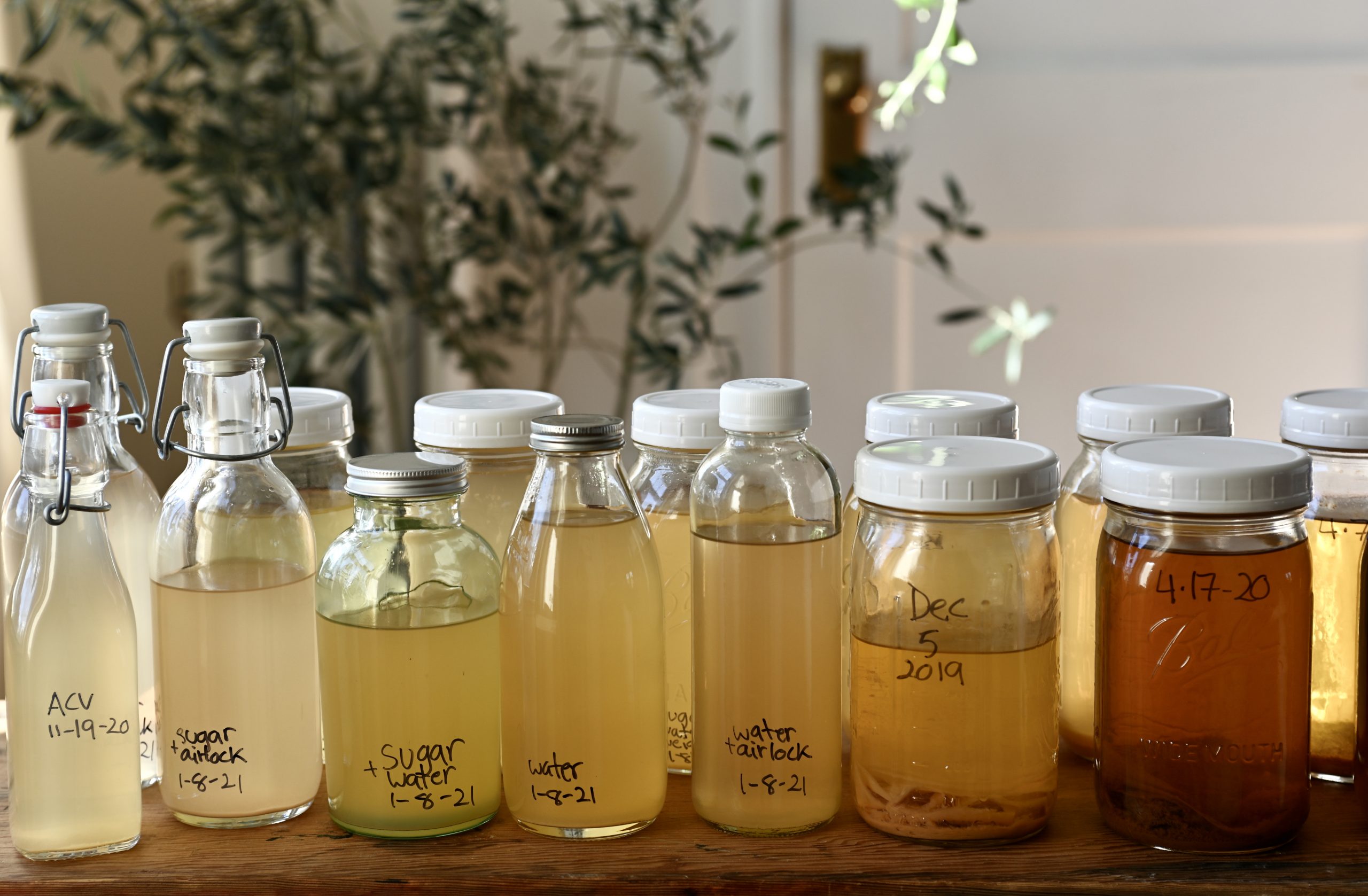
If you ever wondered about making apple cider vinegar with apple scraps, without sugar, or even by keeping the apples under water, you’ll find all the answers here!
Apple cider vinegar (ACV) is a wonderful food as it has so many good health benefits and can be used to create countless recipes. Most people I know keep it in their pantries, myself included.
After a few homemade batches, I know that making ACV is not difficult—it’s simple science. I’m not a scientist, but making my own ACV helps me understand it better.
To make ACV, we have to ferment apples. In order to ferment the apples, liquid helps get the process started. Once we have liquid and apples, it takes bacteria to help with the process.
How do we get the bacteria? It’s easy: bacteria is everywhere in the air around us. To get it to work for us, we need to give it food to eat and sugar is the best food for it.
Once we have gathered the apples, liquid, and sugar, we expose the apples to the air to attract bacteria. When the bacteria gets to the apples, it will eat the sugar and turn it into alcohol. During the process, we need to rotate the apples by pushing them down in the jar. The alcohol will turn into vinegar after just a few weeks of fermentation.
It’s very inexpensive and requires little work. It only seems difficult because of the time we have to wait. Unfortunately, there is no way to rush the process. We have to let nature work for us, according to the time the process takes.
I decided to share what I know about making ACV and posted this video about a year ago. Ever since, I’ve received so many questions and comments.
Some have asked if they can make it with apple scraps, and some suggested putting some weights on the apples to keep them down, etc. 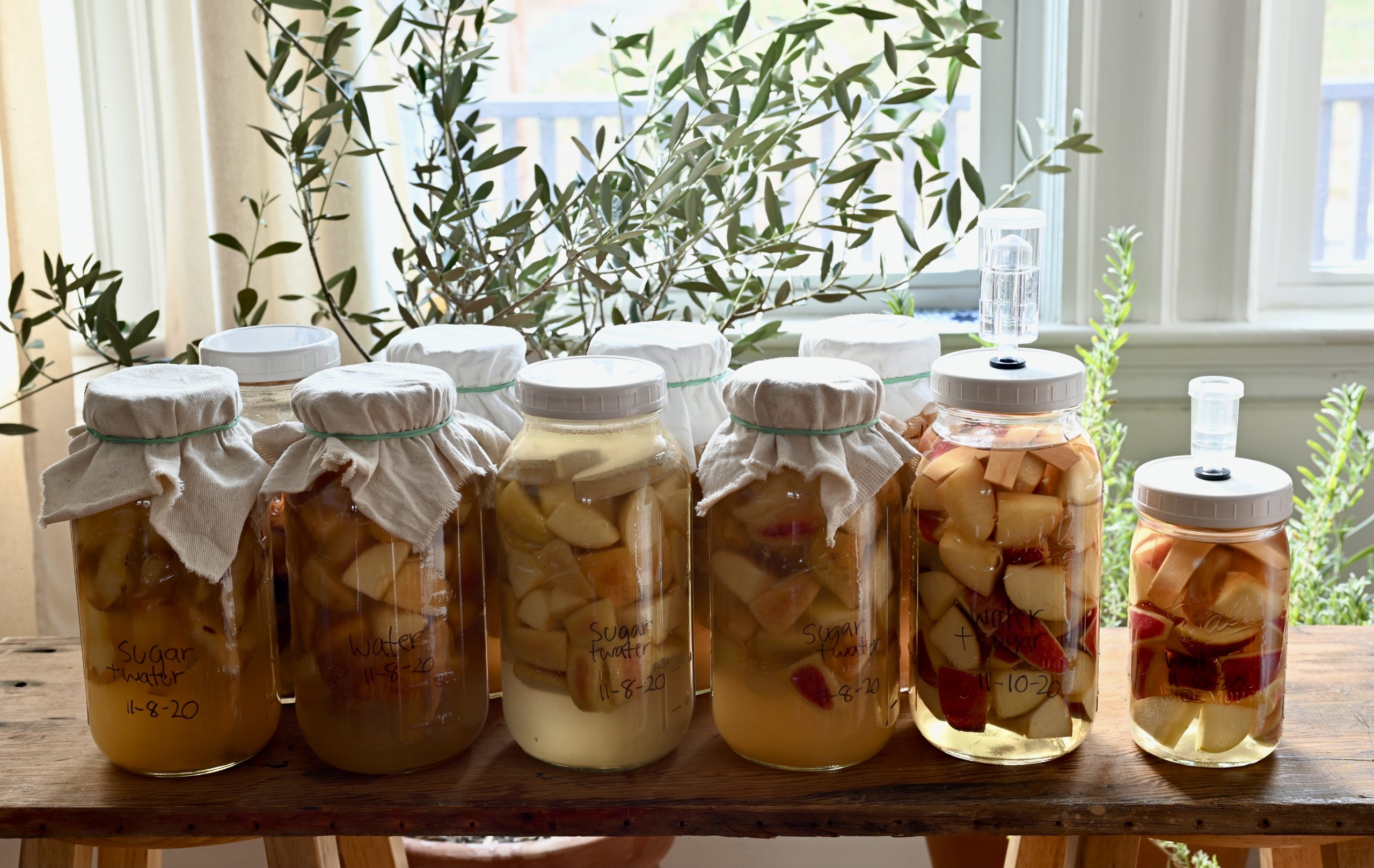
As I couldn’t answer all the questions and was curious to figure out the answers myself, I decided to experiment with all the methods I could think of, and to film the process to share.
It takes patience and time doing this experiment, but it’s a fun and fascinating process. I’ve learned so much along the way, and I’m glad I did it.
After a long production process, the pH level results in all 7 methods I experimented with are about 3.5-3.8 which is the same range as commercial apple cider vinegar, so all these methods work–I’m very pleased!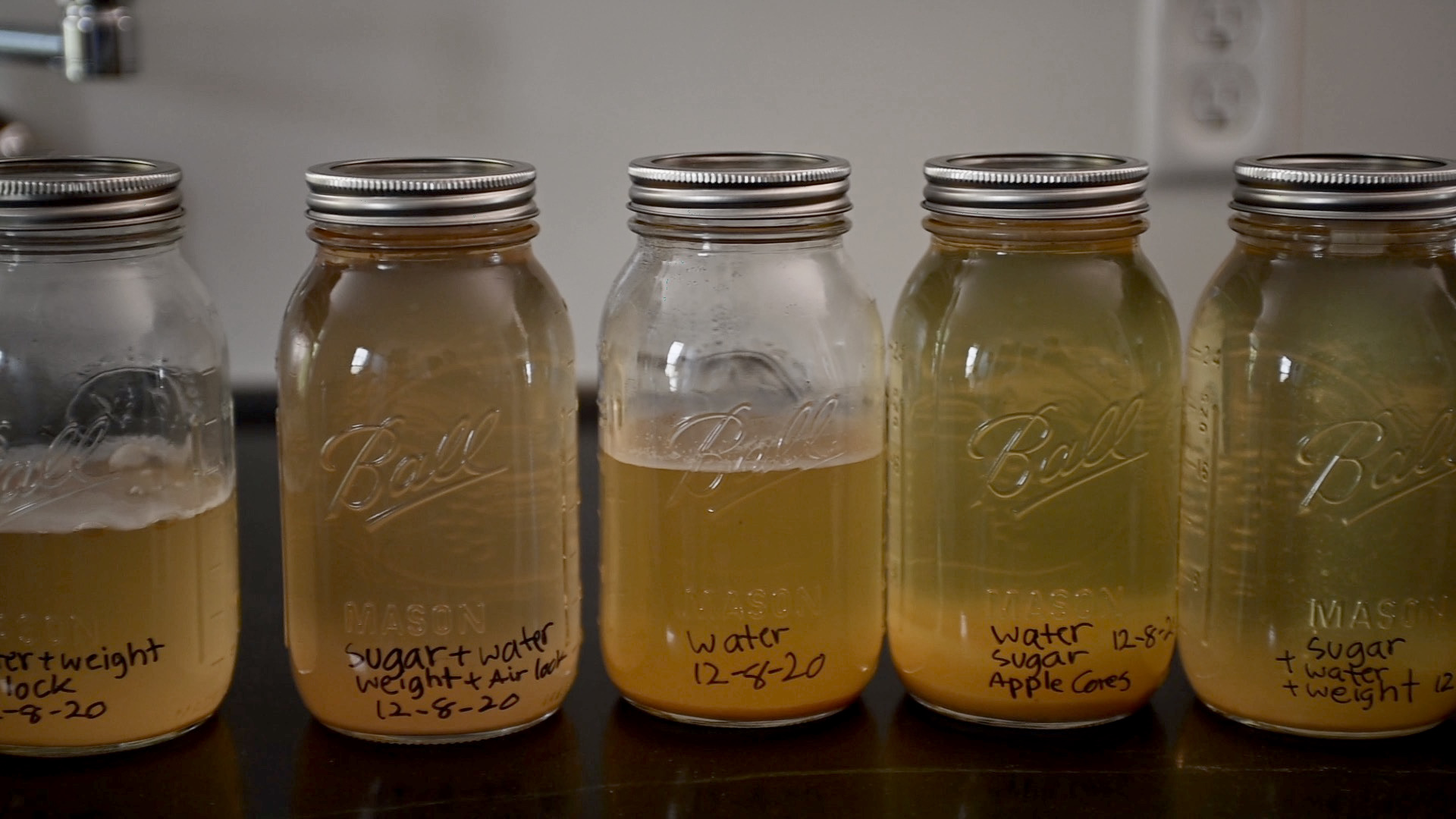
Here are the full result reviews:
- Apples, water, sugar and air: the combination of apples, water, sugar and air gives a great result. Right after the 2nd ferment, the vinegar is sour the way it should be without any sign of alcohol and no trace of sugar. It requires more work to push down the apples, but it only takes a few minutes each day during the first week, and less toward the end of the process. I enjoy seeing the progress of it, so this method is my favorite.
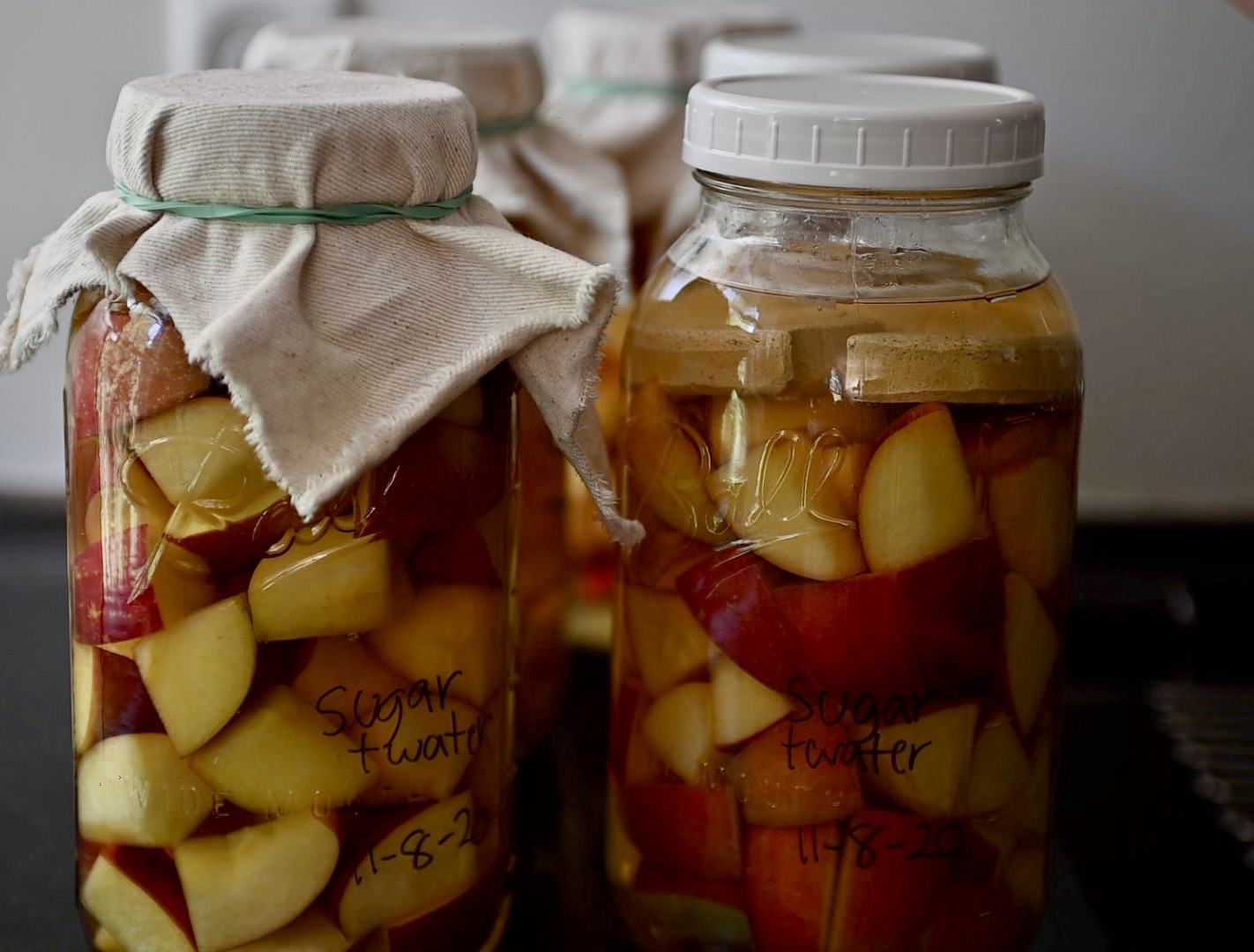
- Apples, water, sugar and weights: this method is very easy as it doesn’t require any pushing, but the flavor is not quite right after the 2nd ferment. However, after 2-3 more weeks, the flavor gets better.
- Apple with only sugar: this method is not practical and I didn’t go through the whole process. I have read about it online when I was trying to learn how to make apple cider vinegar. I was curious to see the result and decided to add the method into my experimentations and realized it’s not practical at all. The whole process of shaking and rotating the apples just to get them to culture and use them to make vinegar by adding apple juice to them. This is my least favorite method.
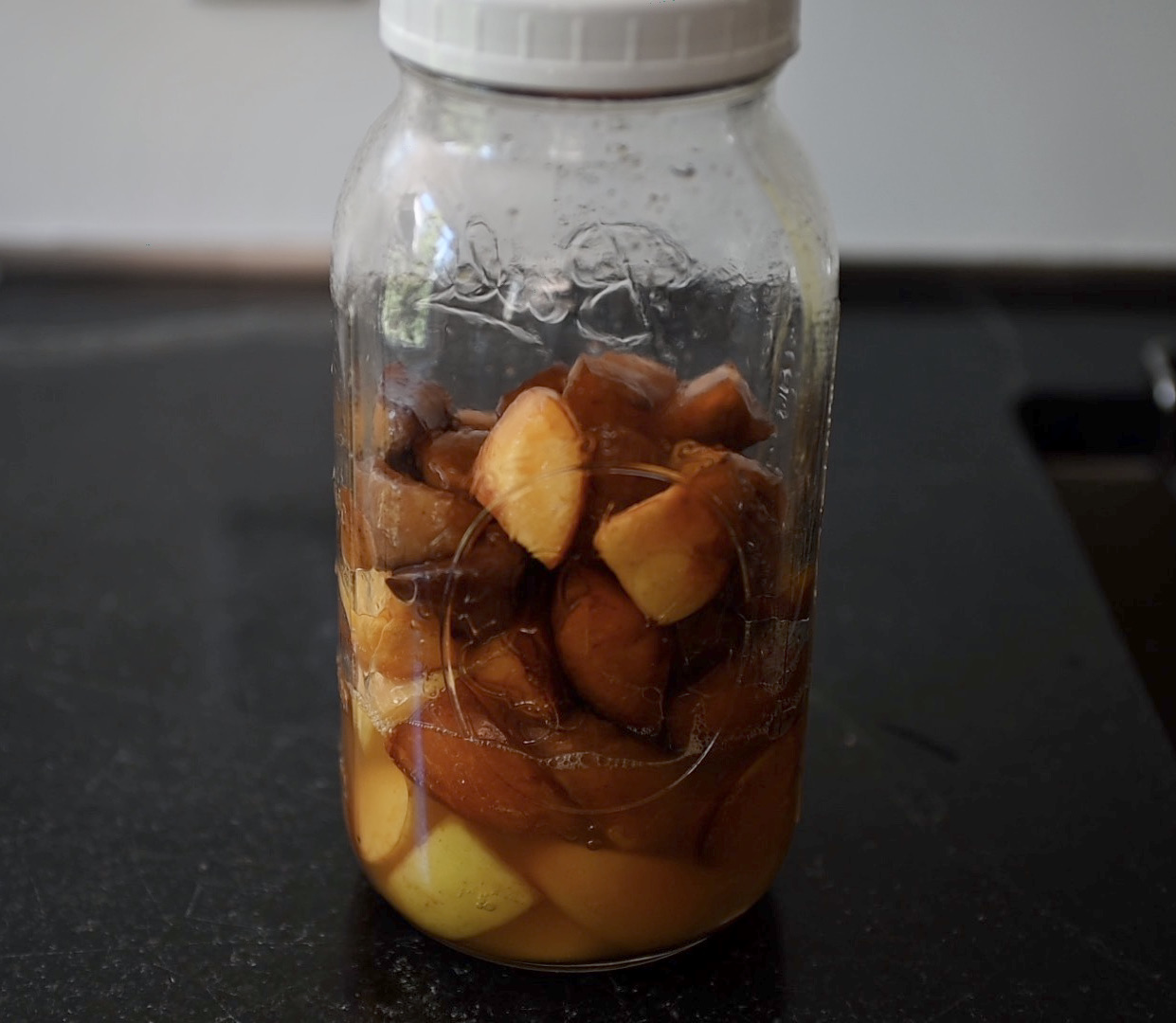
- Apples with only water and air: I never thought this method would work at all, but to my surprise, it works. The flavor is very bland after the 2nd ferment, but it also develops the right flavor after 2-3 weeks.
- Apple cores, water, sugar and air: I was concerned when the water got slimy during the process, but it turned out to be fine. After the 2nd ferment, the flavor is almost right, but not quite good yet. It tastes like good ACV after 2-3 more weeks.
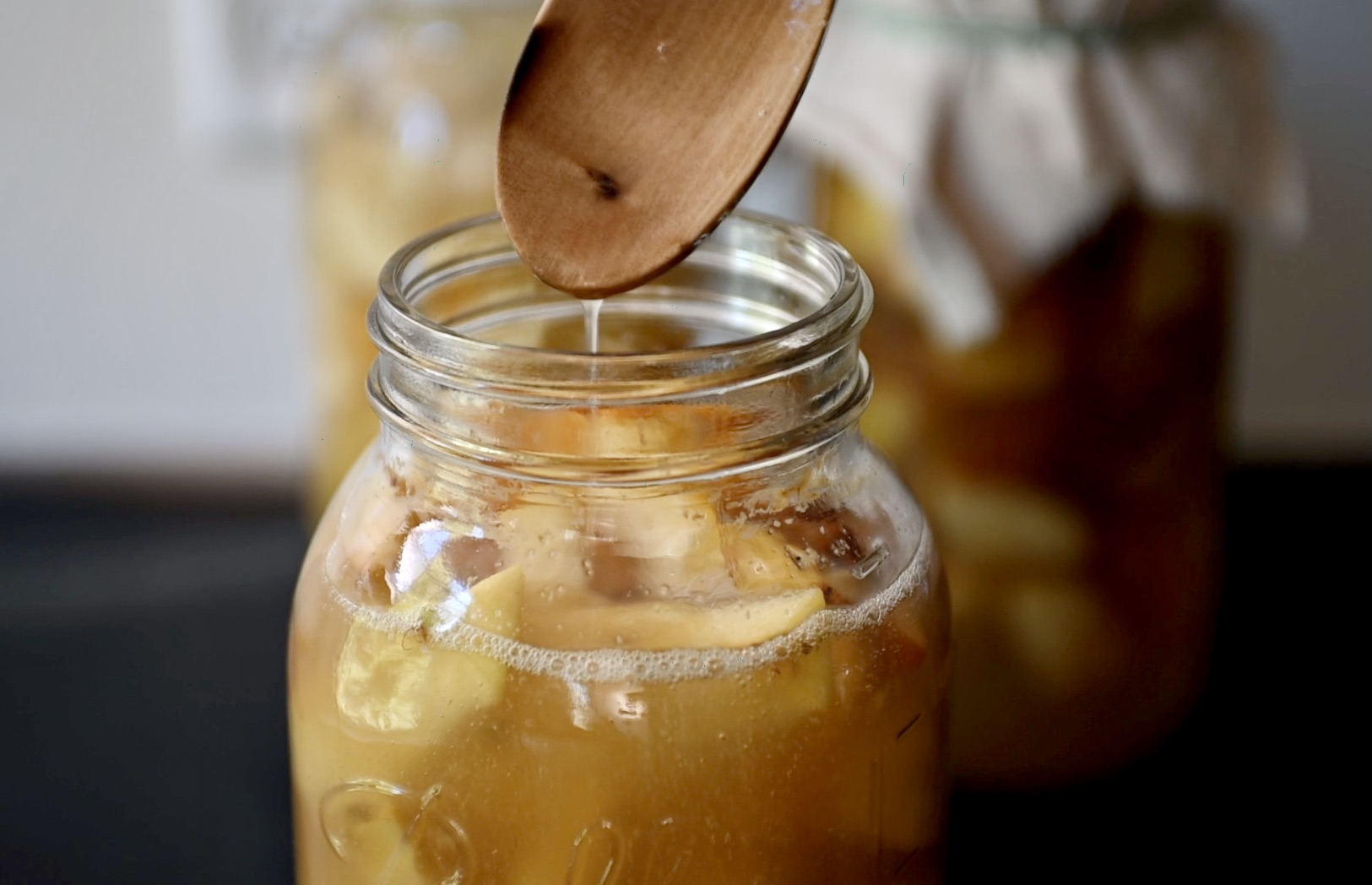
- Apples, sugar, water, weights and an airlock: This method is definitely very easy and clean. The flavor is still on the sweet side after the 2nd ferment. I put it in air-tight bottles and it turned into bubbly soda–very tasty. I saved some in a glass bottle with a lid, and I’ll see if it will develop into a good ACV.
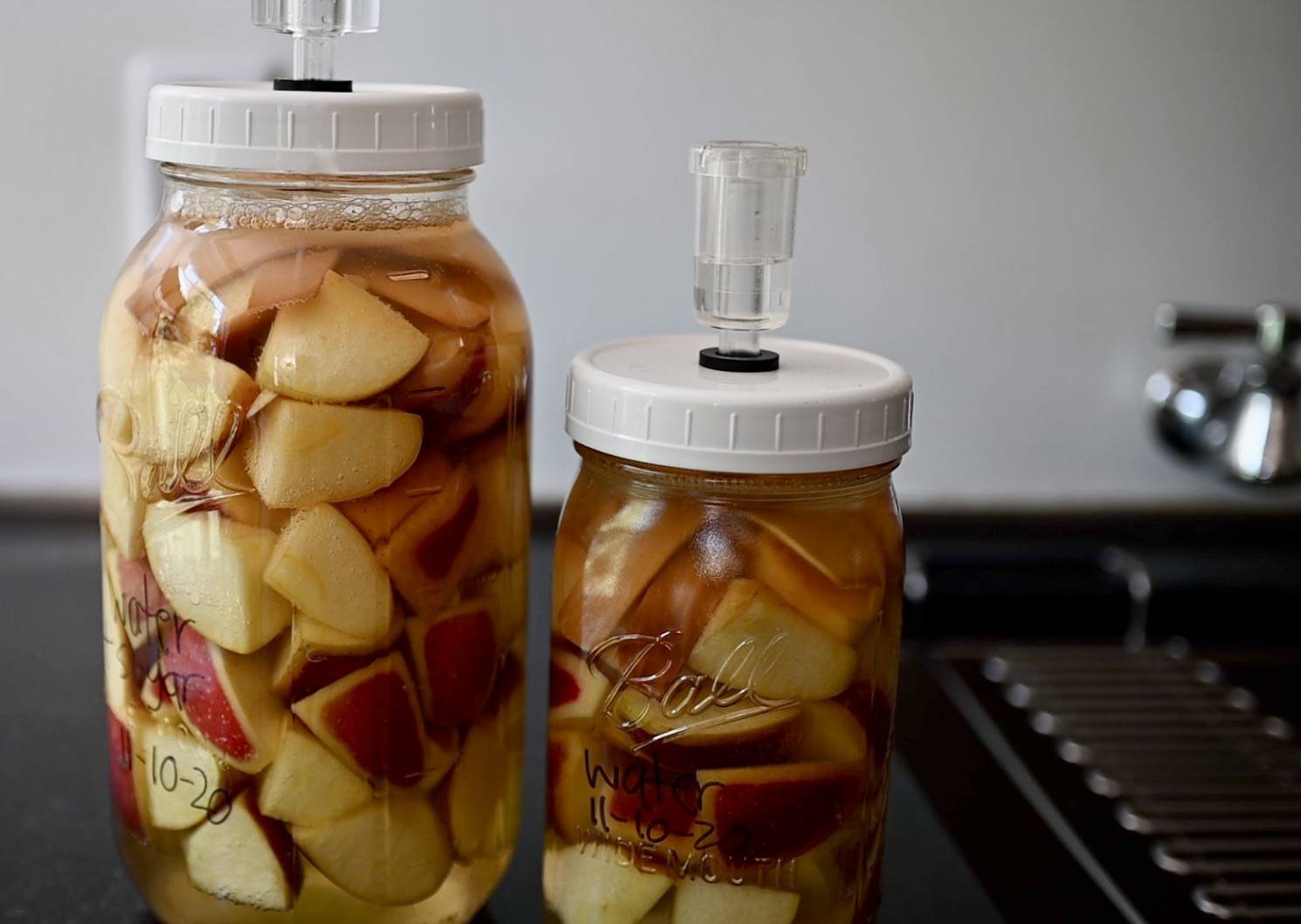
- Apples, water weights and an airlock: The flavor for this one is very bland even when I let it sit for 2-3 weeks after the 2nd ferment. I’ll see if it will get any better in the future.
These are the questions I usually receive with the answers I have learned from this experiment and experiences.
- Can ACV be made with apple scraps? Yes, but it needs more time to develop the flavor during the 2nd ferment.
- Is it safe to have apple scraps with seeds? From what I understand, a small amount of uncrushed seed is ok to ingest. Source
- Can I use weights to hold down the apples so I don’t have to push them down? Yes, but it needs more time to develop the flavor during the 2nd ferment.
- Can I use airlocks to keep everything clean without unwanted bacteria? Yes, but it needs more time to develop the flavor during the 2nd ferment.
- Can I make ACV without sugar? Yes, but it needs more time to develop the flavor during the 2nd ferment.
- Can I use honey or sweetener substitutes? To be honest, I haven’t done so myself with these (that’s right I should have made these methods too!) However, from what I learned, honey has antibacterial properties and it doesn’t work well for the bacteria gathering. As for the sweetener substitutes, I also learned that they don’t work well as the bacteria needs natural sugar to eat.
- I can’t drink alcohol, is it ok to add ACV to my diet? Yes, there is no alcohol left in the final result of ACV.
- I don’t want to have any sugar in my diet, how much sugar do I get from using ACV? You won’t get any sugar from ACV at all in the end.
- How much ACV should I take per day to lose weight? I’m so sorry, I don’t know anything about weight loss so I can’t give you an answer to this.
- Can I use plastic bottles to make ACV? I have never used plastic bottles to make it before as I’m afraid that the plastic might leach into the vinegar, so I can’t tell for sure if it’s safe. I highly recommend using glass bottles.
- What temperature range is good for making ACV? It depends on the time of the year. When I make it during the summer, the temperature in my house is about 72-78 degrees F° (22-25 degrees C°) and it’s about 63-68 F° (17-20 degrees C°) during the fall, winter and spring. From my experience, it works well throughout the year. It takes a shorter time during summer, but I have to make sure to keep fruit flies away. I like to make it in the fall during the apple season as I get a lot of free apples and I don’t have to worry about the flies.
- Can I use a kombucha SCOBY to make ACV? From what I learned, no. A kombucha SCOBY contains a balance of yeasts and bacteria. Whereas a mother from ACV contains only bacteria. Source
- I get flies in the jars while making it, what should I do? Try using a thicker cloth, but make sure it is breathable.
- I have worms on my apples, why? This never happens to me. I push down the apples every day during the first week, every other day during the second week, and every 2-3 days during the 3 week, then only 1-2 times during the final week. Doing so gives no chance for any worm to grow.
- I have white film on top of my vinegar, is it bad? From what I learned and from my own experience, it’s totally fine and safe as long as you don’t see mold or smell odors. However, please use your own judgement, you should be able to tell if it’s bad.
- I have mold growing on my apples, should I get rid of the whole thing? It depends on how bad it is, if you have mold on one or two pieces, try picking them out and discarding them. If you push down the apples during the process, you shouldn’t have this problem.
- How long does it take for my vinegar to make a mother? Sometimes it makes the mother right around 3 weeks, but sometimes it takes a little bit over a month, or even longer.
- I have a mother in my vinegar, what do I do with it? You can use it to jump start the future batches. However, from my experience, it’s not much faster.
- Do I need to add sugar to the apples if I use a mother for the future bathes? I add a little bit of sugar to mine when I use the mother I have. I still push the apples down as I’m always afraid that mold might grow on them. To be honest, I don’t really use the mother to make my ACV. as it’s not faster from my experience. I like to start it from scratch, as I like watching the whole process. Even though I don’t really use a mother to make ACV, I have to admit that it’s satisfying to see a mother in my vinegar. !
- If I add apple juice to the cultured apples to make my next batch of ACV, do I need to add more sugar? I don’t add sugar to it and it works fine. However, it might work better if you add a little bit of sugar.
Tips:
- Keep everything clean.
I hope you find this experiment helpful and easier to make a decision on which method you want to use for making your own ACV!